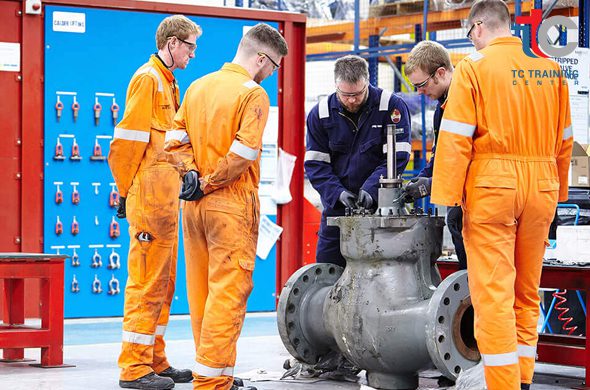Control Valves & Actuators
Start time
Finish time
Address
Course price

Objectives
- Comprehend the inner operation of most commonly utilized valve types
- Decide on the best valve to use, for specific applications
- Determine the most cost-effective valve size
- Determine the best device to drive and operate an assortment of valves
- Get control valves to operate optimally in the field, using an assortment of techniques
Who Should Attend?
- Key instrumentation personnel involved in valve maintenance
- Senior management and staff responsible for valve and actuator selection
- The mechanical and electrical staff that come into contact with valves
- Process control engineers requiring a high plant availability, often affected by valves
- Designers, industrial engineers, and staff responsible for plant safety
- All personnel with a vested interest in applications that require/utilize valves
Course Outline:
DAY 1
Valve Principals, Purposes, Types, Control Signals, and Flow Conditions
- Valve Principles, Valve Purposes, and Control Signals used with Valves
- Flow Conditions in and around Valves
- Reynolds Numbers
- Cavitation and Flashing and How This Influences Valve Selection
- Associated Equipment to Valves
- Definitions and Principles of Operation of the Major Types of Valves
DAY 2
Valve in P&IDs, Leakage, Valve Characteristics, and Valve Size Calculations
- Continuation of the Definitions and Principles of Operation of more Major Types of Valves
- Additional associated Equipment – Pertinent with Valves
- P&ID Diagrams associated with Valves
- Valve Leakage and Valve Leakage Rate Calculation
- Valve Inherent Characteristics and their importance once installed
- Performing Manual Calculations – for Valve Sizing
DAY 3
Valve Software, Actuators, Positioners, Cavitation & Noise Control & SIS
- Software Used to Size Control Valves
- Assorted Actuators and their Properties and Characteristics
- Valve Positioners
- Cavitation and Noise Control – in and around valves
- Valves and How They Fit into Pressure Relief and Safety Instrumented Systems (SIS)
- Using Digital Controllers – with valves
DAY 4
3-term Controllers and Loop-tuning for Processes Containing Control Valves
- Understanding and Implementing the Right Controller Action – for fail-safe valves
- Understanding all of the Variables – associated with three-term control
- Open Loop Tuning – for controllers that act on control valve loops
- Closed-Loop Tuning – for controllers that act on control valve loops
- Trial and Error Tuning – to optimize control valve performance
DAY 5
Using Valves in Cascade, Ratio, Dead-Time Dominant, Non-Linear and PLC-Controlled Processes
- Setting-up a Cascade Loop – using a single valve and multiple controllers
- Setting-up a Ratio Loop – using a Single Valve and Multiple Process Variables (PVs)
- Dead Time Dominant Loops – how this affects the valve performance, and how this is corrected
- Using a Control Valve in a process that exhibits different responses in different zones
- Combining PLCs – for valve control




